‘Why is it that an object has an aura?’
We sit down with the dynamic duo behind the celestial showcase by Hermès during Milan Design Week
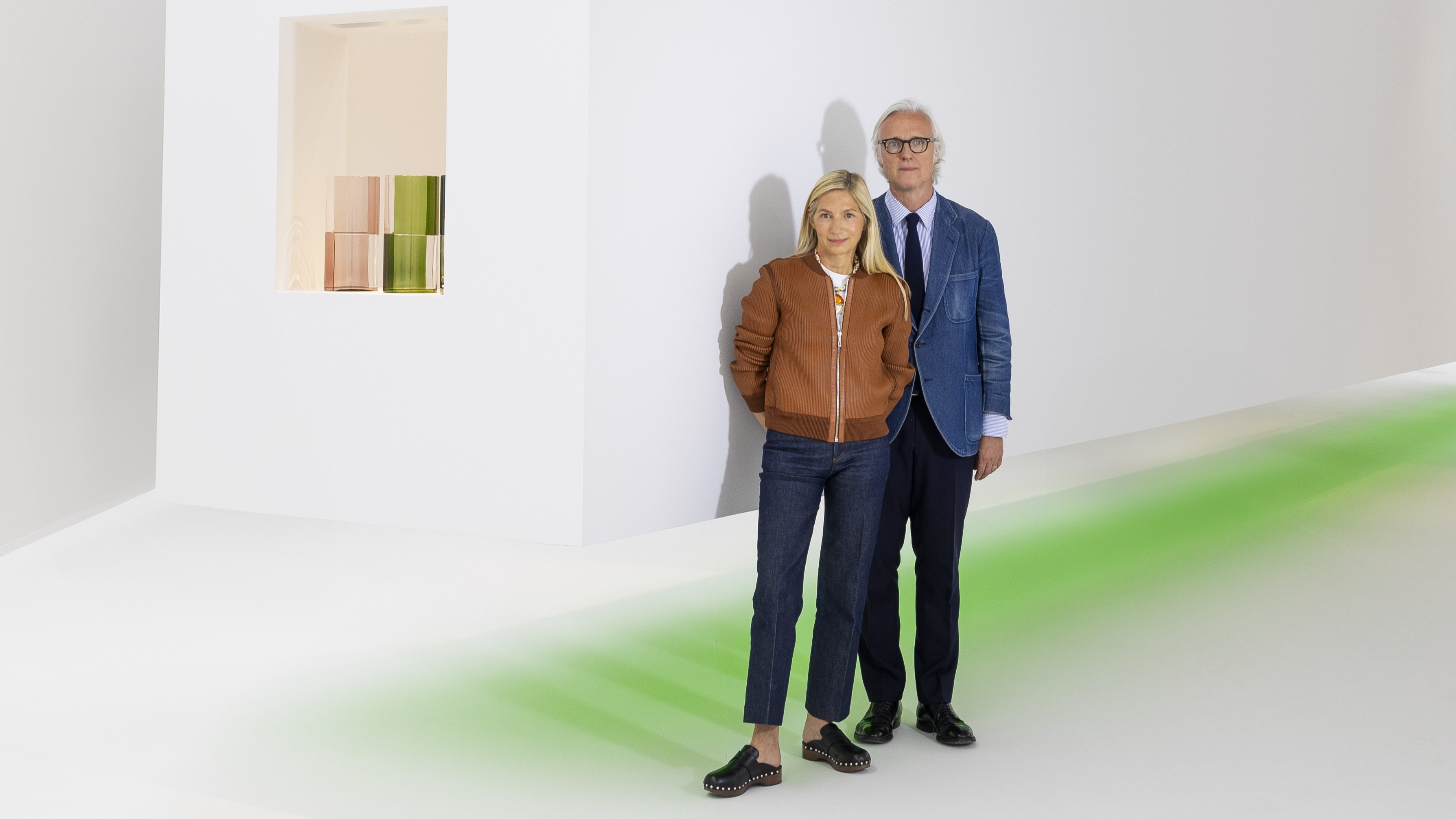

Amidst the cacophony of Milan Design Week, there are always a small handful of shows each year that set the agenda and become talking points for everyone attending. In the decade or so since Hermès first showed its homeware at Milan, its exhibition quickly emerged as a bellwether, not just in the week, but in the annual calendar; Hermès shows appear on moodboards of design houses, years later. Rich in texture, narrative, materials and meticulous detailing, the Hermès shows are benchmarks of quality, expression and inspiration that live on.
This year, visitors to La Pelota, the post-war former swimming pool on Via Palermo, were surprised this year to witness a starkly different approach by the French luxury house. The cavernous space was a white box, brightly lit, with various geometric-shaped boxes suspended in the air, each housing a different novelty. Pools of coloured light were reflected on the floors beneath the boxes. Increasingly, when everyone else at Milan was concerned with layers of context and theatrical stagings, Hermès took a different approach: clinical, pristine, ethereal and otherworldly. Stepping into the room was like entering a hallowed, sacred space - or an operating theatre. The essence of the showcase was to encourage us to consider the emotion of an object, laid bare in all its glory. ‘Inside the box is the latent object, the perfect object, the power of imagination, on the threshold of an intermediate world. It is not an illusion,’ read the official statement.
Such an unforgiving setting asks a lot of the objects on show. These boxes weren’t mere plinths, but more like inverted altars, inviting us to worship their contents, or at the very least, to study each display with forensic attention. Only Hermès could be confident of the quality of their homeware to be so bold, and this year’s collection had moments of exquisite beauty, intrigue, charm - as always. Standout pieces included Tomás Alonso’s coloured glass side tables with a swivelling cedar box for a surface, Amer Musa’s cashmere throws and Nigel Peake’s hand-painted, geometric porcelain collection.
If the Hermès show leads the way as the poster-child of Milan Design Week, what are we to take from this show? What does it say about the times in which we find ourselves, in design and beyond? As visitors emerged from this controlled environment, blinking into the Spring sunshine, there was a general sense of bewilderment. Where were the stories and the materials, the echoes of process that proliferate as hallmarks for integrity elsewhere? Perhaps these heavily contextualised displays that we’ve come to expect serve, beyond storytelling, as distraction from the objects themselves. Maybe it’s time we looked more closely to consider the essence of things as they are, in design and life.
Charlotte Macaux Perelman, architect and artistic director of Hermès collections for the home with Alexis Fabry are the masterminds behind Hermès scenography, and they sat down with Wallpaper* to explain their process and journey to this radical departure.
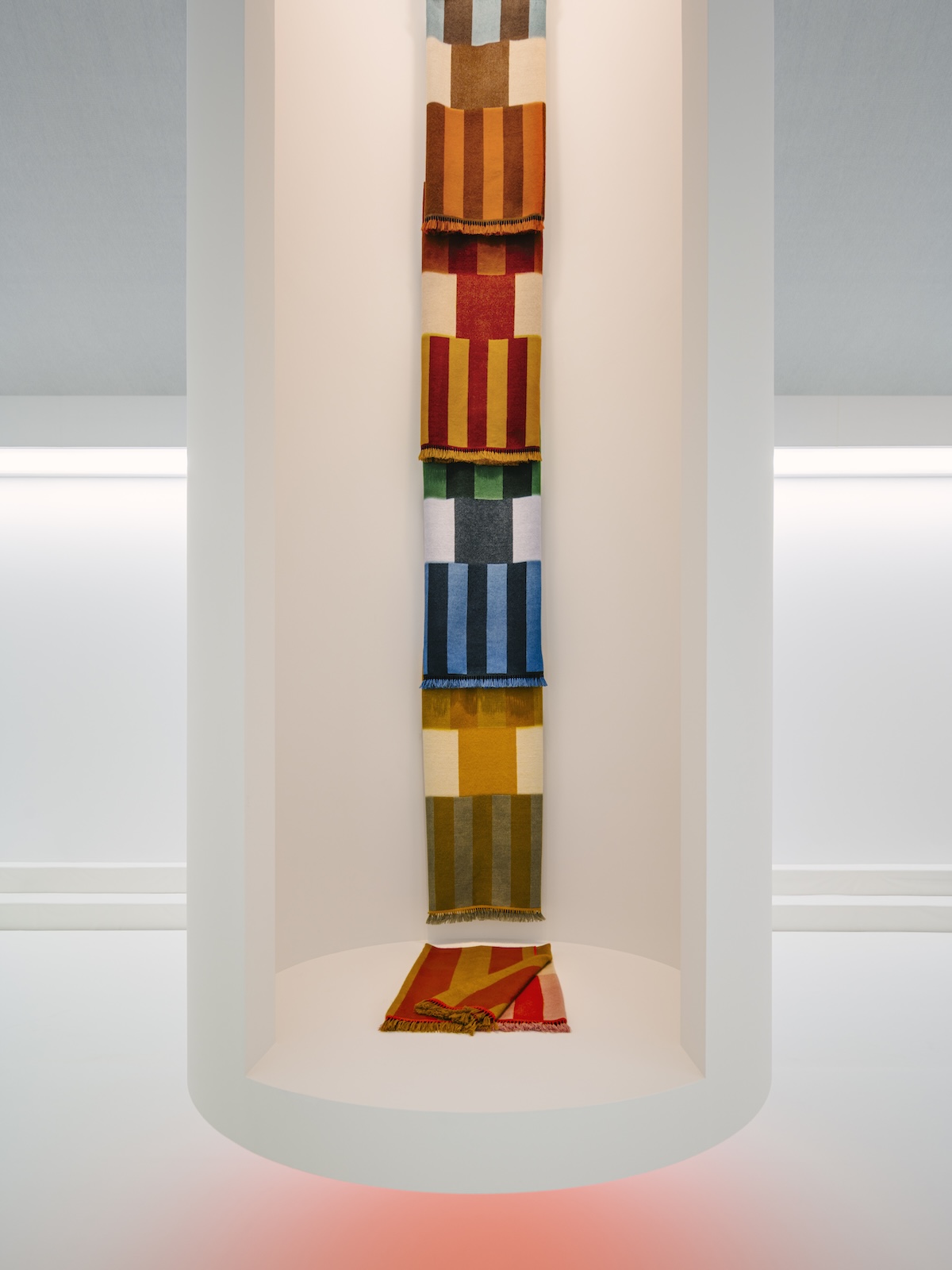
Striped cashmere throws in the Hermès home collection at Milan Design Week 2025
Wallpaper*: This is a very different and striking exhibition approach compared to your previous shows, and also against the prevailing theme of theatricality elsewhere in Milan. I’m interested to hear what the idea was behind the change of direction from shows that have been rich in materials to this spectacle of white boxes?
Charlotte Macaux Perelman: We challenge ourselves to keep moving. Even yesterday we were already asking ourselves what we might do next year. Our starting point is to look at the values of Hermès. Last year we looked at the Hermès legacy of materiality. This year we asked ourselves: ‘Why is it that an object has an aura? Why is it that gives any object a particular presence? How does a neutral object acquire an emotional connection with a human?’
Alexis Fabry: A few years ago Tomás Alonso designed a lamp for Hermès. During an interview, when asked what defines an Hermès object, he replied: ‘Something that is rightly done; well done.’ In the years since, we have often quoted Tomás on the subject of ‘rightness’. And over the last year we realised we should go further and express something deeper than materiality. In this show, we are examining the inestimable qualities of the object itself.
Receive our daily digest of inspiration, escapism and design stories from around the world direct to your inbox.
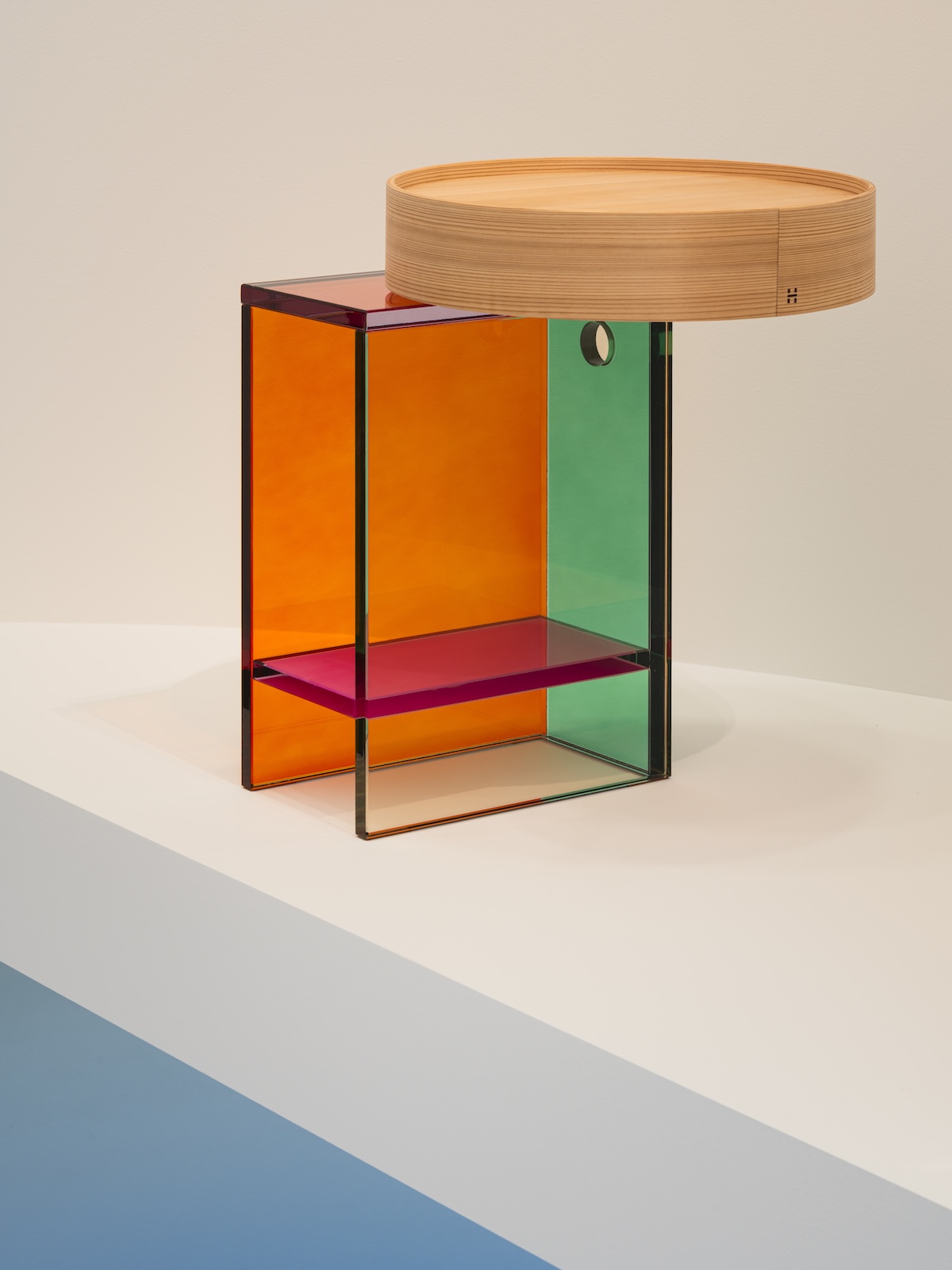
A side table by Tomás Alonso in the Hermès home collection at Milan Design Week 2025
W*: It’s interesting that the scenography elsewhere in Milan this year is richly layered and contextualised, more concerned with showing objects in real life settings. Here, you have abstracted the object, allowing us to focus on the pieces forensically. Was your intention to invite us to build a connection between viewer and object without distraction?
AF: Yes - we have in the past shown objects in specific contexts. A great aspect that distinguishes Hermès from other houses is its confidence in the so-called ‘rightness’ of an object. Hermès is willing to invest in the long-term to ensure any object is absolutely brought to life in the right way. Such faith in the object itself means we do not have to rely on context or communication to support or tell its story.
W*: Tell me about some of the works that represent the ethos of the collection.
CMP: We love Tomás Alonso’s table. It is interesting that we have used industrial glass in combination with a beautifully crafted tray, exemplifying the quality of Japanese woodwork. The clash between the two materials is intriguing. In the past, we would have concentrated more on the crafted wood, and less on the industrial glass. This layering of two different materials and material approaches demonstrates that we have evolved. It feels right for now.
AF: This table is truly miraculous. We describe Tomás as a tightrope walker. If you look at the tray atop the glass and the way it rotates, it is so precise in mechanism, construction and movement, it is Tomás demonstrating his skill as a tightrope walker.
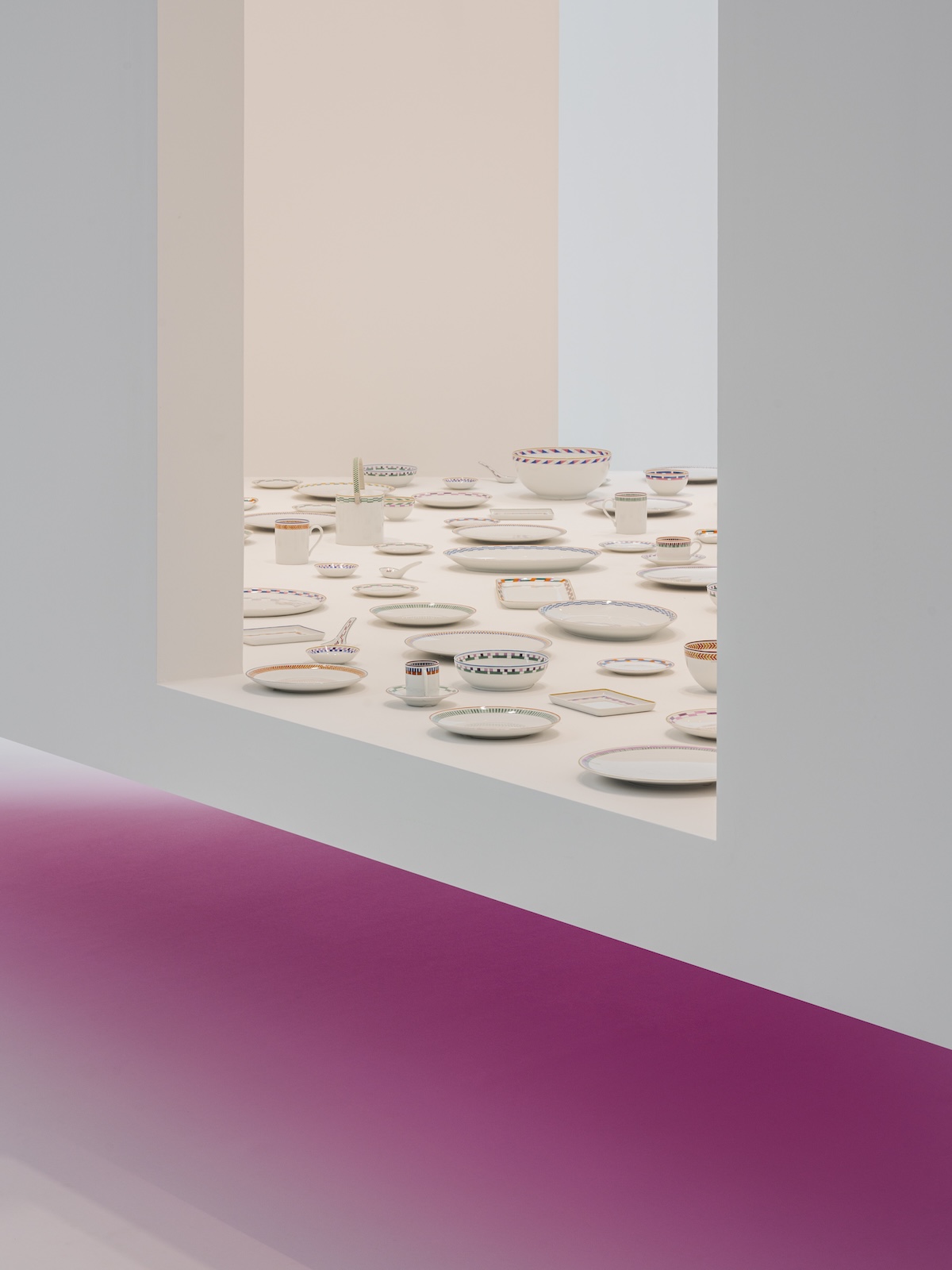
Porcelain tableware with artwork by Nigel Peake in the Hermès home collection at Milan Design Week 2025
W*: How do you work together?
CMP: We are lucky that there are two of us. We reinforce our convictions, if we hesitate or feel a little swamped, then we strengthen each other mutually. There’s an unspoken trust between us.
AF: We agree so often that Charlotte and I sometimes ask ourselves if one of us is perhaps superfluous. That said, we always look at objects from a different viewpoint so, even though we converge, we come from separate standpoints, which is interesting - we bring different perspectives to a shared conclusion.
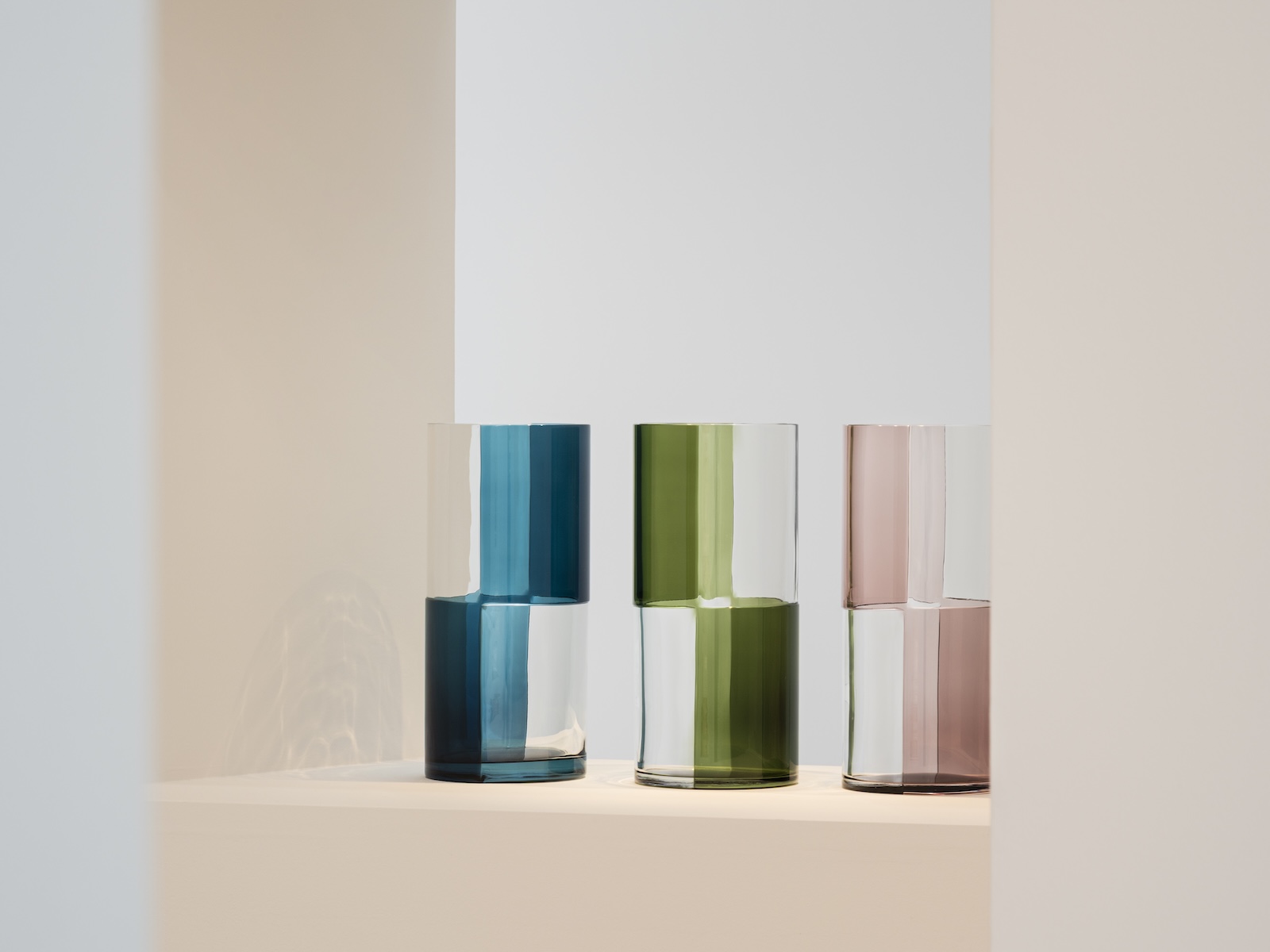
Transparent mouth-blown glass in Hermès home collection at Milan Design Week 2025
W*: When you first showed in Milan, it was as if we were being shown the craft within design; the celebration of craftsmanship, skill, expertise and material intelligence. With your latest offering, it feels like we are celebrating the art of design. Is this a conscious evolution or a reflection of the times in which we live and our values therein?
CMP: Perhaps the white box approach reminds one of art galleries. I don’t think this was our inspiration or concern. We wanted to have a contrast with our show last year, of course. But the idea was to encourage examination of feeling; to explore what gives an object an emotionally involving presence. The question we asked ourselves is simple: what is it within an object that touches us? There is great craft, skill and quality here but each object has a primary intention in its manifestation too. The white universe lays this bare.
AF: We were attracted by the idea of exposing these limits: our points of strength and perhaps also our weaknesses. By questioning inherent emotional values within objects, we are examining something opaque and mysterious. Why is it that some designs manage to emit this and some don’t, even though they have been made in the same environments? Is it about the objects themselves, or is it something within us?
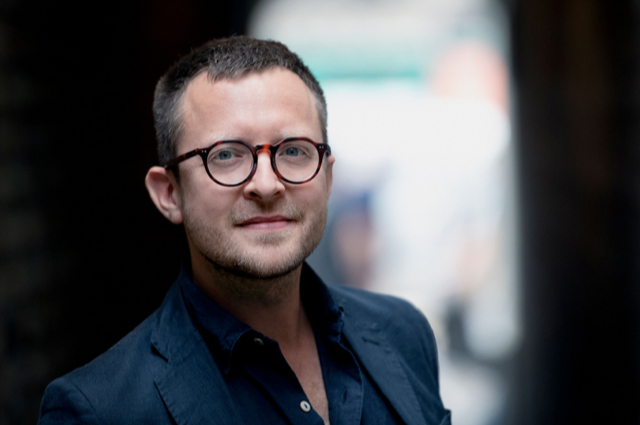
Hugo is a design critic, curator and the co-founder of Bard, a gallery in Edinburgh dedicated to Scottish design and craft. A long-serving member of the Wallpaper* family, he has also been the design editor at Monocle and the brand director at Studioilse, Ilse Crawford's multi-faceted design studio. Today, Hugo wields his pen and opinions for a broad swathe of publications and panels. He has twice curated both the Object section of MIART (the Milan Contemporary Art Fair) and the Harewood House Biennial. He consults as a strategist and writer for clients ranging from Airbnb to Vitra, Ikea to Instagram, Erdem to The Goldsmith's Company. Hugo recently returned to the Wallpaper* fold to cover the parental leave of Rosa Bertoli as global design director, and is now serving as its design critic.
-
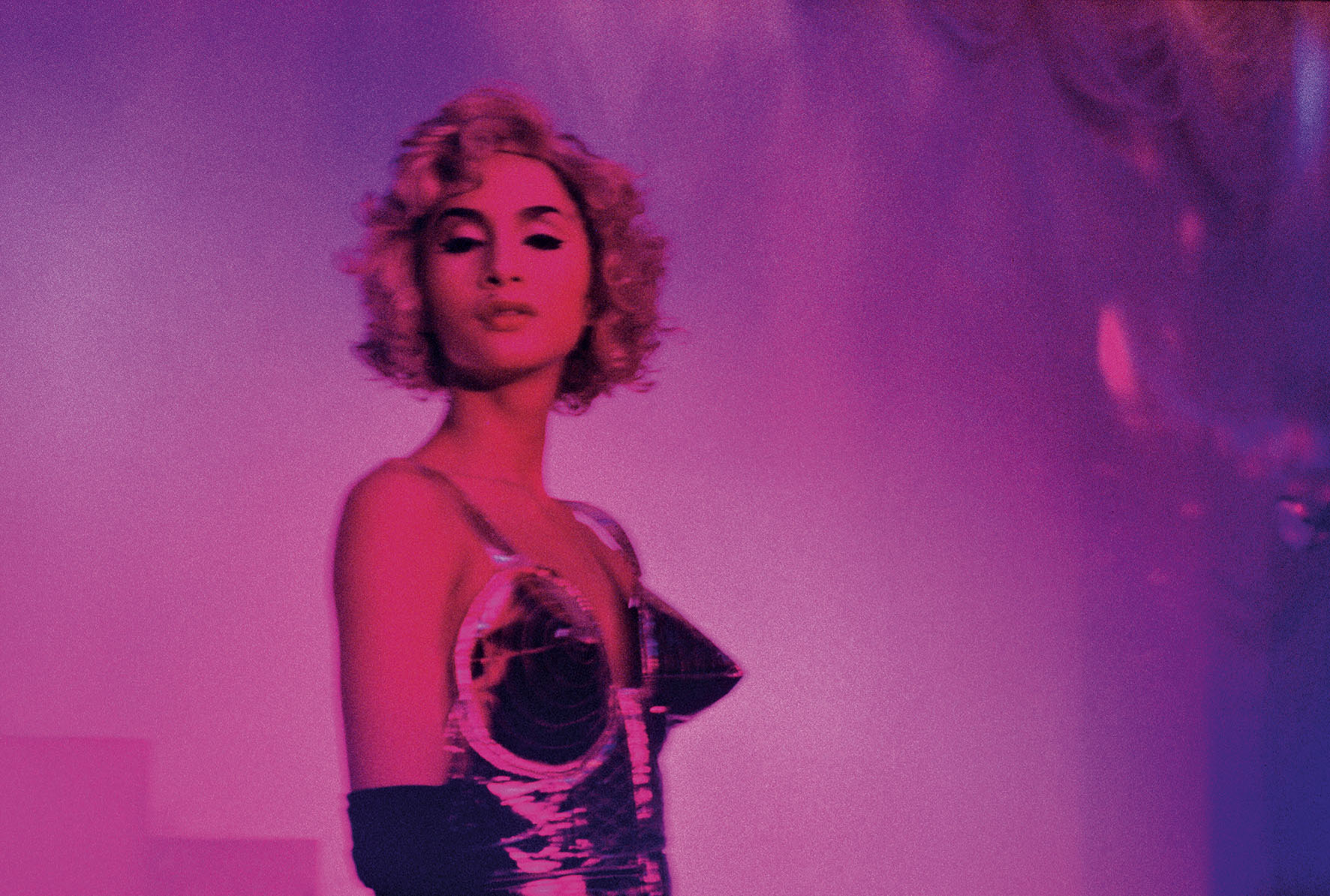 The most comprehensive showing of Nan Goldin’s photographs and films is intense and emotional
The most comprehensive showing of Nan Goldin’s photographs and films is intense and emotionalNan Goldin's moving-image work makes a heavy impact in ‘This Will Not End Well’ at Milan’s Pirelli HangarBicocca
-
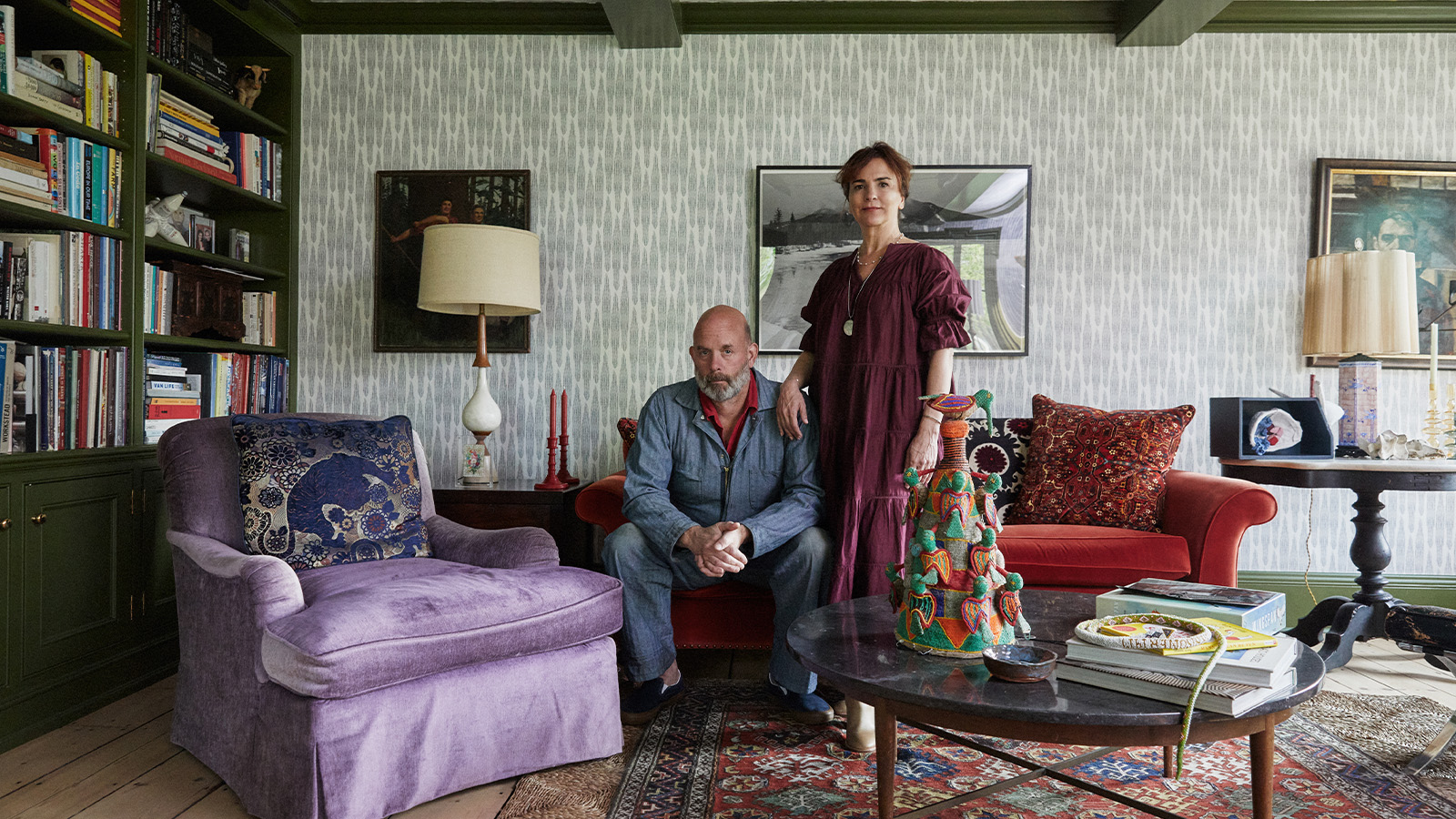 How We Host: Interior designer Heide Hendricks shows us how to throw the ultimate farmhouse fête
How We Host: Interior designer Heide Hendricks shows us how to throw the ultimate farmhouse fêteThe designer, one half of the American design firm Hendricks Churchill, delves into the art of entertaining – from pasta to playlists
-
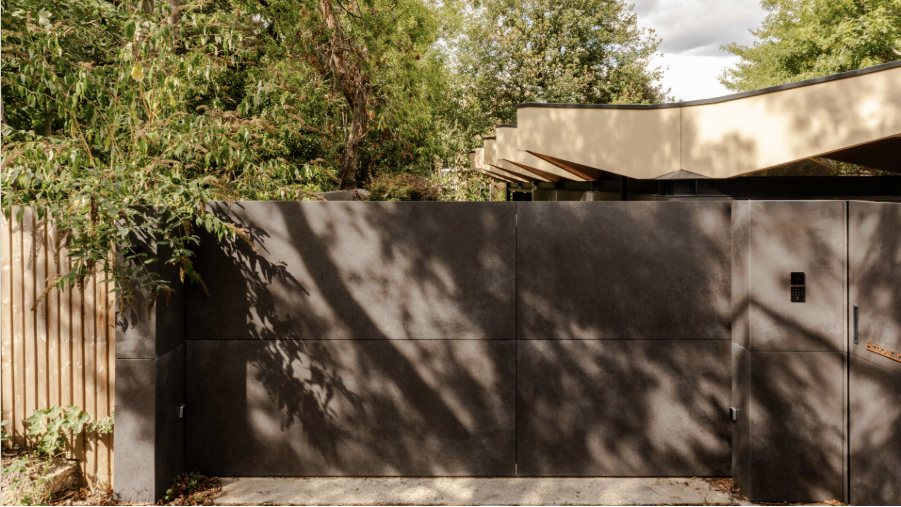 Arbour House is a north London home that lies low but punches high
Arbour House is a north London home that lies low but punches highArbour House by Andrei Saltykov is a low-lying Crouch End home with a striking roof structure that sets it apart
-
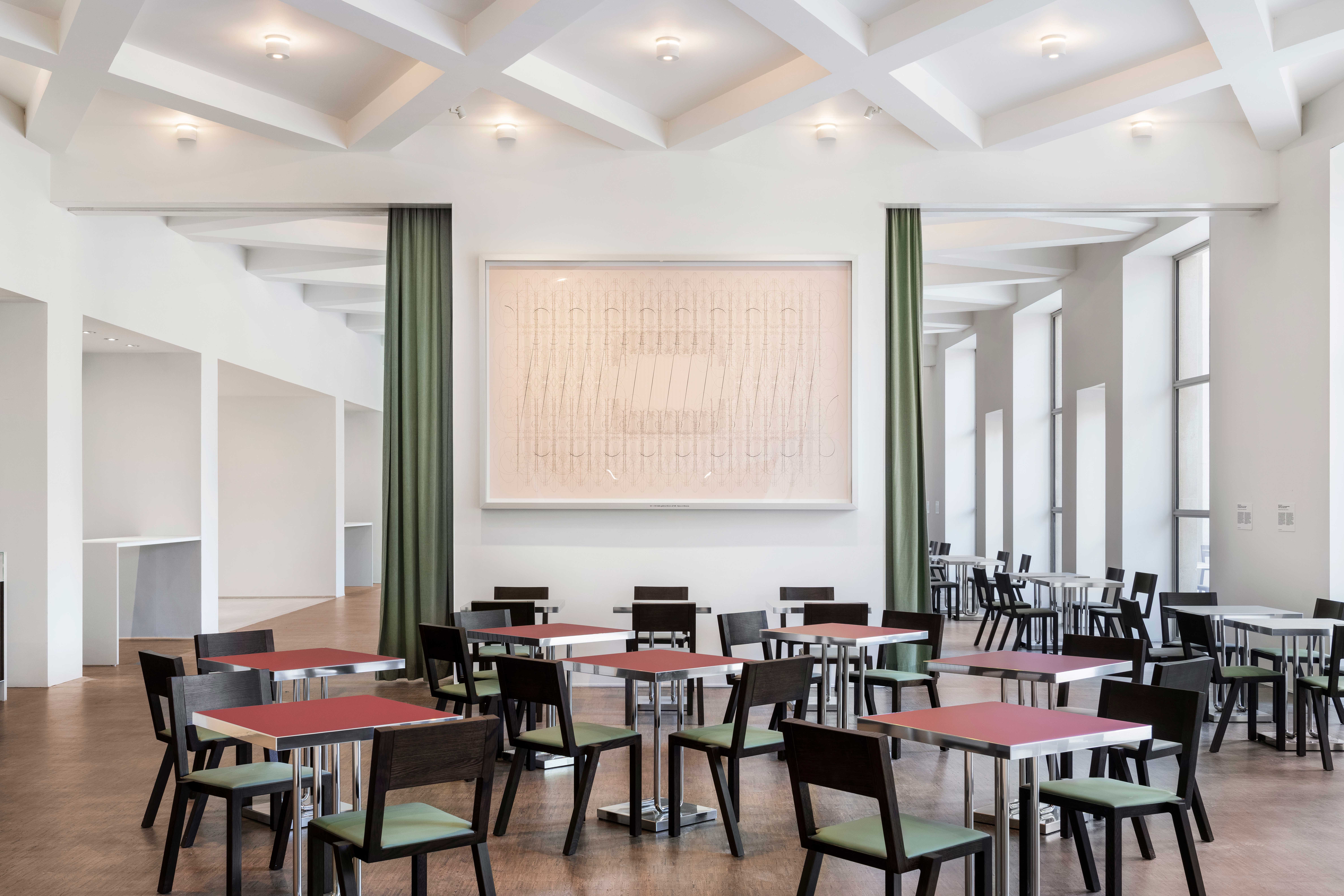 Dine within a rationalist design gem at the newly opened Cucina Triennale
Dine within a rationalist design gem at the newly opened Cucina TriennaleCucina Triennale is the latest space to open at Triennale Milano, a restaurant and a café by Luca Cipelletti and Unifor, inspired by the building's 1930s design
-
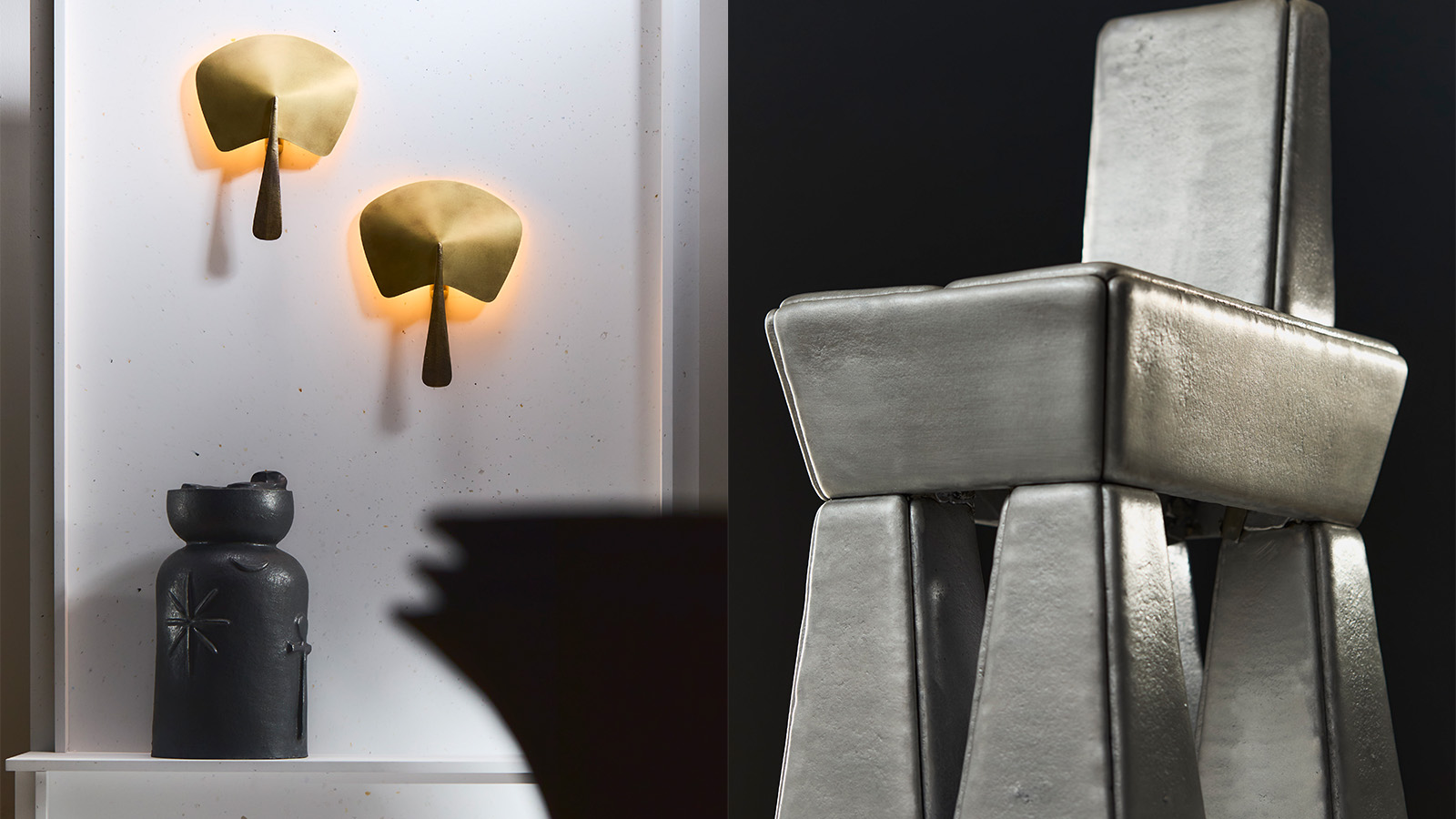 20 emerging designers shine in our ‘Material Alchemists’ film
20 emerging designers shine in our ‘Material Alchemists’ filmWallpaper’s ‘Material Alchemists’ exhibition during Milan Design Week 2025 spotlighted 20 emerging designers with a passion for transforming matter – see it now in our short film
-
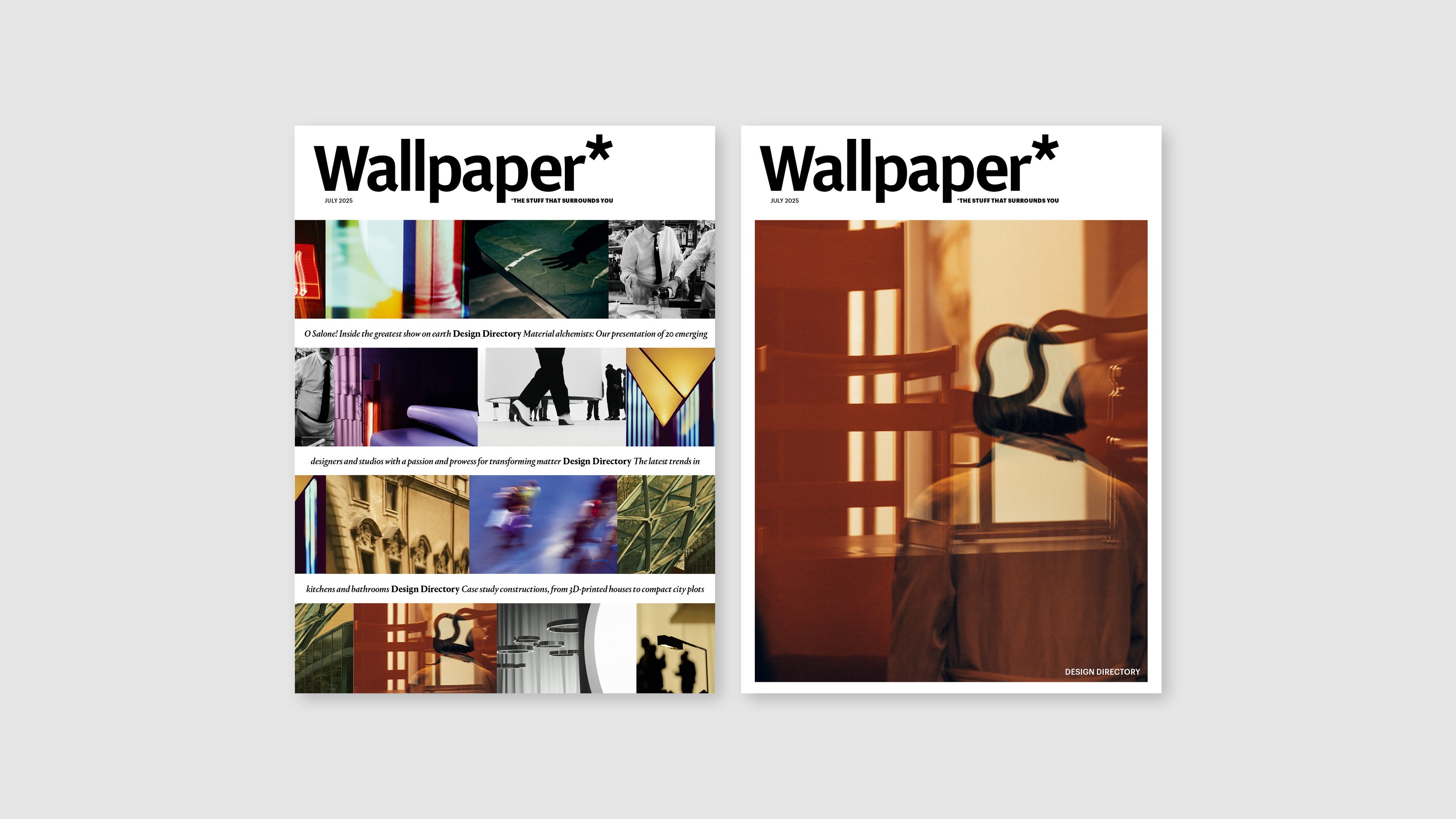 Delve into the Wallpaper* Design Directory 2025, on sale now
Delve into the Wallpaper* Design Directory 2025, on sale nowIn the July issue of Wallpaper*, find a photographic love letter to Milan Design Week, plus the best new furniture, lighting, kitchens, bathrooms and more
-
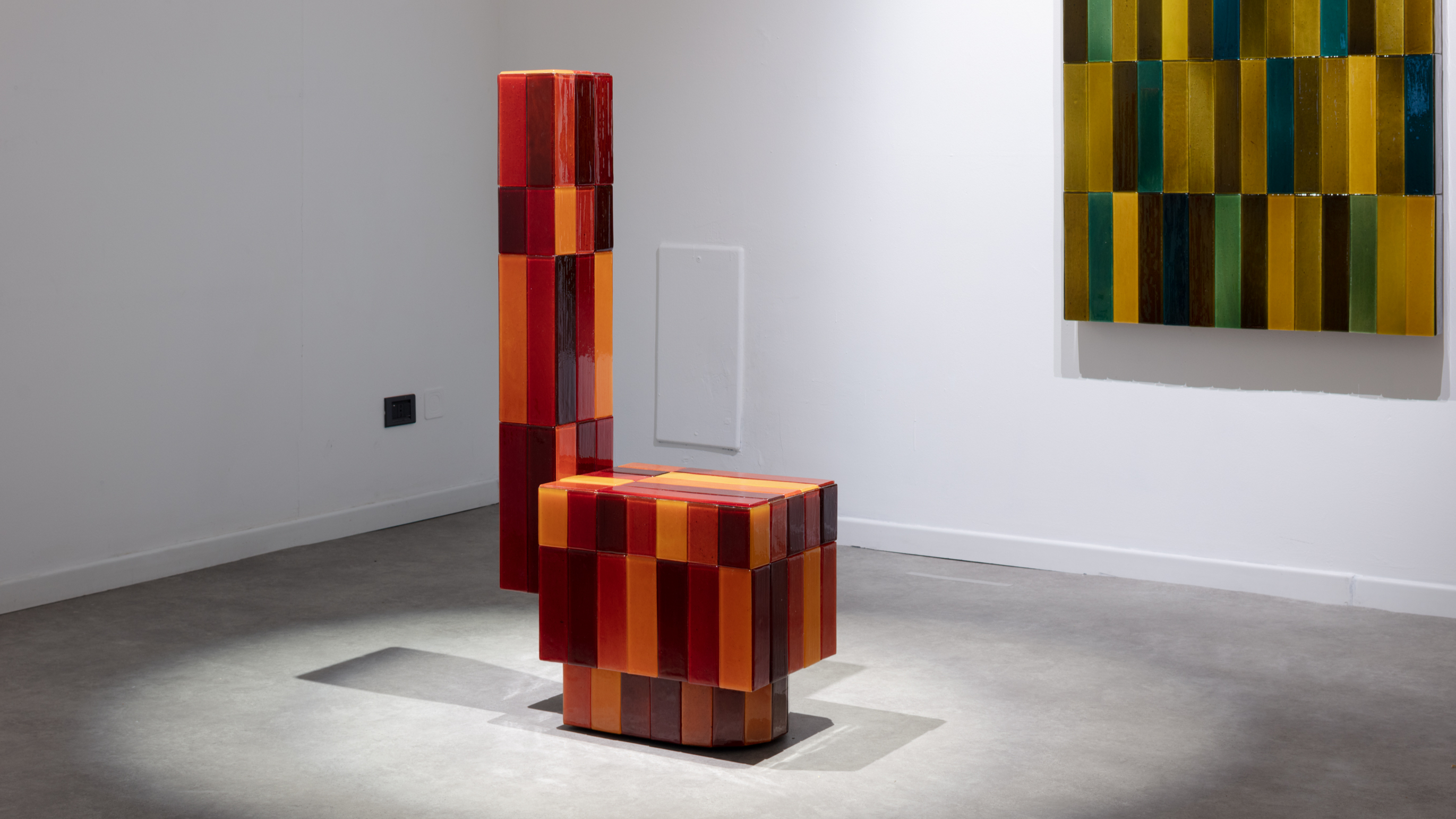 Tokyo design studio We+ transforms microalgae into colours
Tokyo design studio We+ transforms microalgae into coloursCould microalgae be the sustainable pigment of the future? A Japanese research project investigates
-
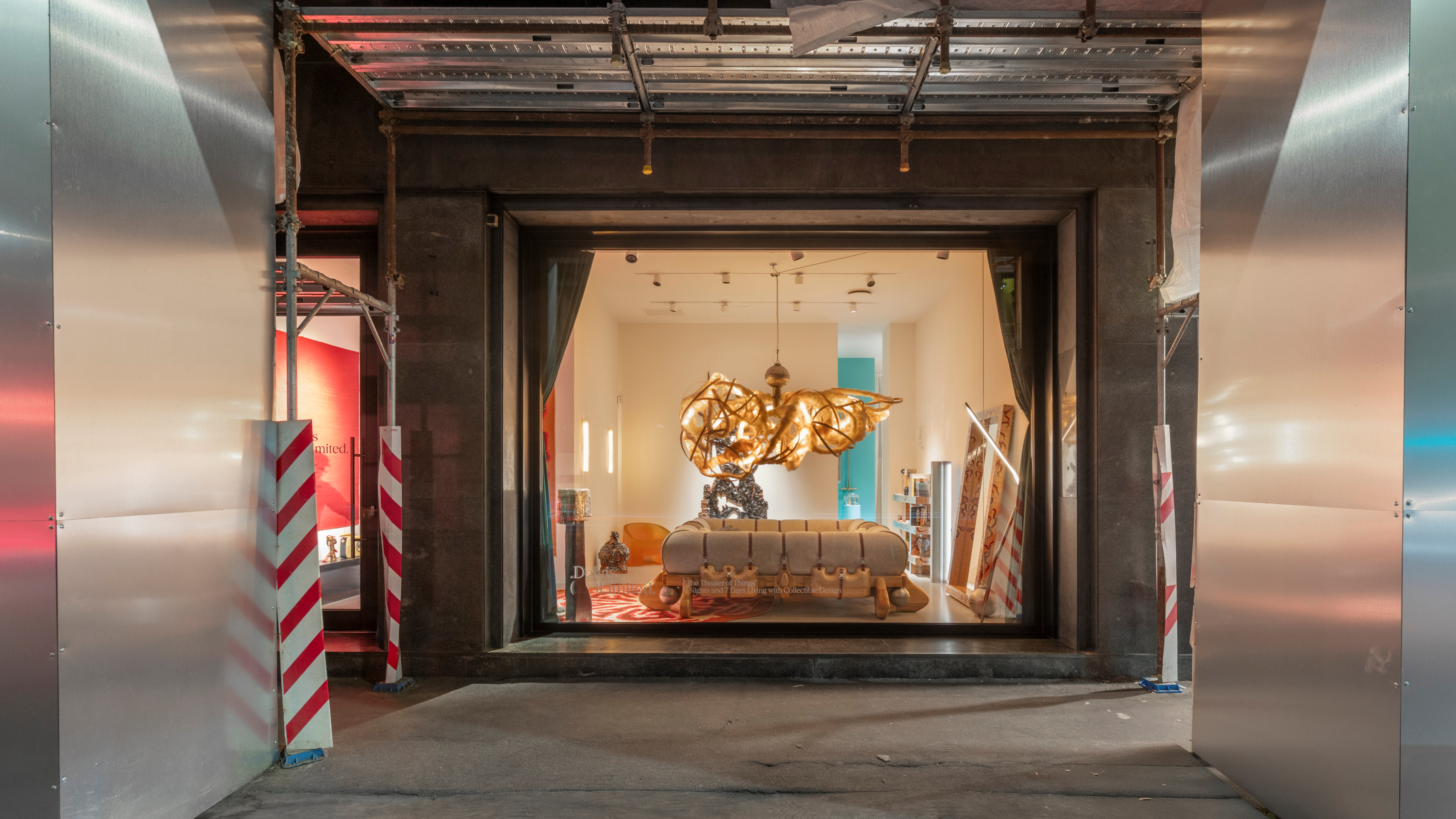 Delvis (Un)Limited turns a Brera shopfront into a live-in design installation
Delvis (Un)Limited turns a Brera shopfront into a live-in design installationWhat happens when collectible design becomes part of a live performance? The Theatre of Things, curated by Joseph Grima and Valentina Ciuffi, invited designers to live with their work – and let the public look in
-
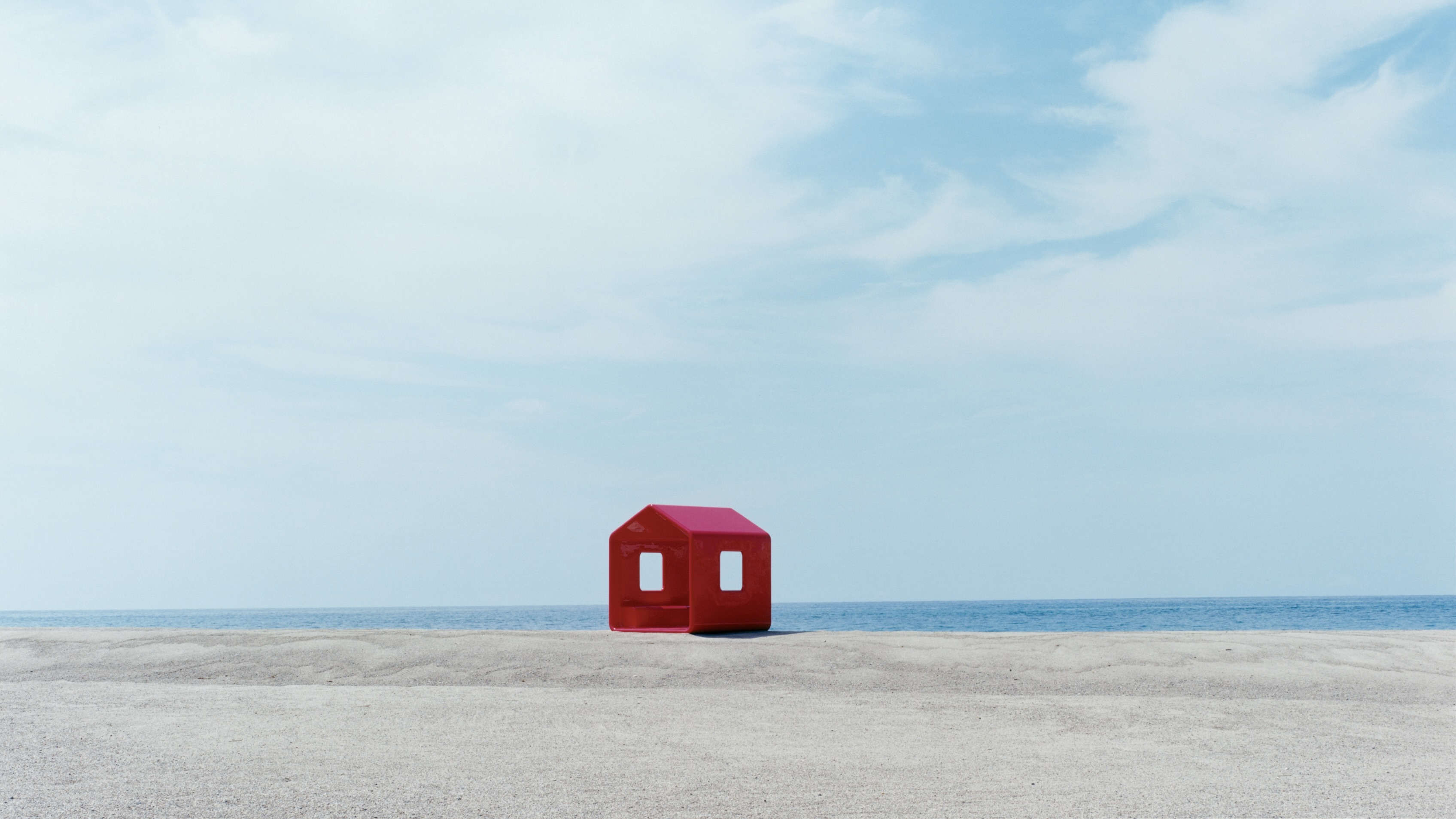 Naoto Fukasawa sparks children’s imaginations with play sculptures
Naoto Fukasawa sparks children’s imaginations with play sculpturesThe Japanese designer creates an intuitive series of bold play sculptures, designed to spark children’s desire to play without thinking
-
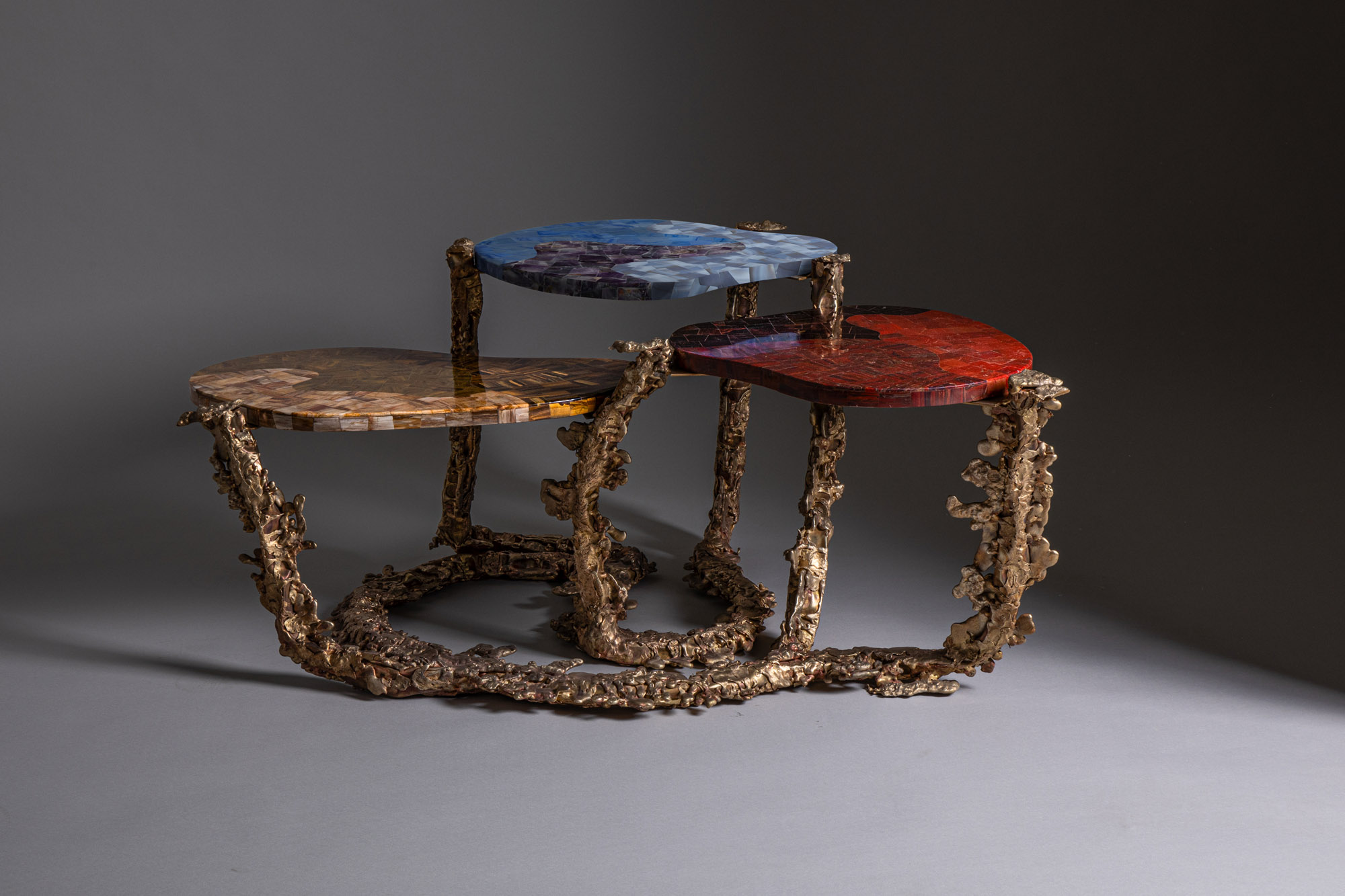 Inside the Shakti Design Residency, taking Indian craftsmanship to Alcova 2025
Inside the Shakti Design Residency, taking Indian craftsmanship to Alcova 2025The new initiative pairs emerging talents with some of India’s most prestigious ateliers, resulting in intricately crafted designs, as seen at Alcova 2025 in Milan
-
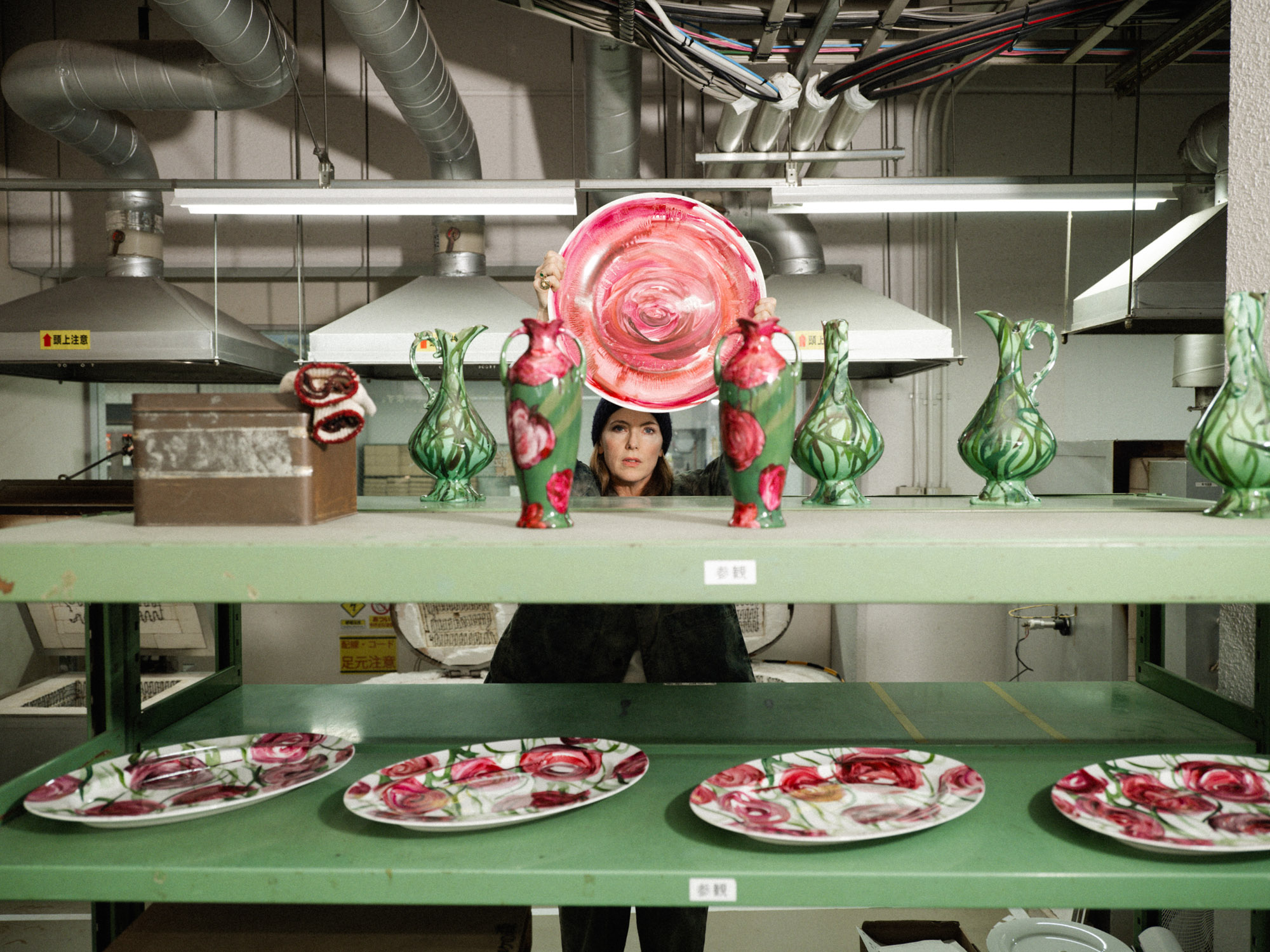 Faye Toogood comes up roses at Milan Design Week 2025
Faye Toogood comes up roses at Milan Design Week 2025Japanese ceramics specialist Noritake’s design collection blossoms with a bold floral series by Faye Toogood